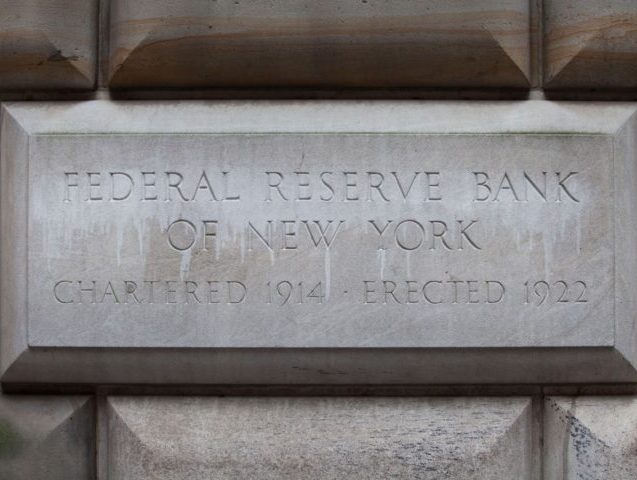The short-term funding market has still not recovered from its seizure at the start of the week–at least not enough to be taken off central bank life support.
The Federal Reserve Bank of New York announced Thursday afternoon that it would once again intervene in the repo market on Friday morning, its fourth consecutive day of supplying tens of billions of dollars to hold down interest rates in the short term funding market.
The NY Fed said it would purchase up to $75 billion of debt between 8:15 a.m. and 8:30 a.m. Securities eligible to be sold to the Fed include Treasuries, government-sponsored agency mortgage-backed securities, and debt issued by Fannie Mae and Freddie Mac.
The Fed has been intervening in the repo market, which provides short-term funding vital to the largest Wall Street banks, ever since interest rates spiked on Monday. The cause of the interest rate spike remains a matter of speculation. The most popular theory on Wall Street is that the Fed’s earlier balance sheet reduction has left the market with too few dollars relative to Treasuries held by financial institutions.
The repo market is at the center of the U.S. financial system but it is little understood even by most people working in finance.
The word repo is short for repurchase. In a repo, one party sells another a security while promising to buy it back at a later date, often the very next day. The repurchase price is a bit higher than the initial sale, creating a positive return for the cash provider. Although technically structured as sales and repurchases, essentially what’s going on here is the creation of short-term loans collateralized with Treasuries, mortgage-backed securities, and agency debt. The higher repurchase price is equivalent to earning interest on the loan.
Big Wall Street banks borrow cash to finance their trading activity, for themselves and for clients, by selling securities and promising to buy them back the following day. The cash comes from investors with lots of dollars looking to make a little extra interest, such as money-market funds and government-sponsored housing agencies such as Fannie Mae, Freddie Mac, and the Federal Home Loan banks. Typically, the interest rate on repos falls within the Fed’s target range for the fed funds rate, the rate banks pay to borrow reserves from each other.
Here’s how it works. Traders at the big Wall Street firms put in bids to borrow cash and cash investors accept bids, typically striking deals by 10 a.m or 11 a.m. The bids are promises to pay an interest rate and a pledge to post securities as collateral. Later the day, the securities get allocated to the cash investors. The following day, the repos get unwound in the morning. The cash investors get their cash back and the Wall Street banks get their securities back. Then it starts all over again.
Why do the big Wall Street banks fund themselves this way? It’s really just a more intense version of the basic model of banking: borrow short-term, lend long-term, and make your profit on the difference between the rates.
Usually, the repo process is nearly seamless. Most of the previous day’s trades just get rolled over into the next day’s repos, with a slight tinkering of the rates and slight shifts in the collateral. But this week has been unusual.
